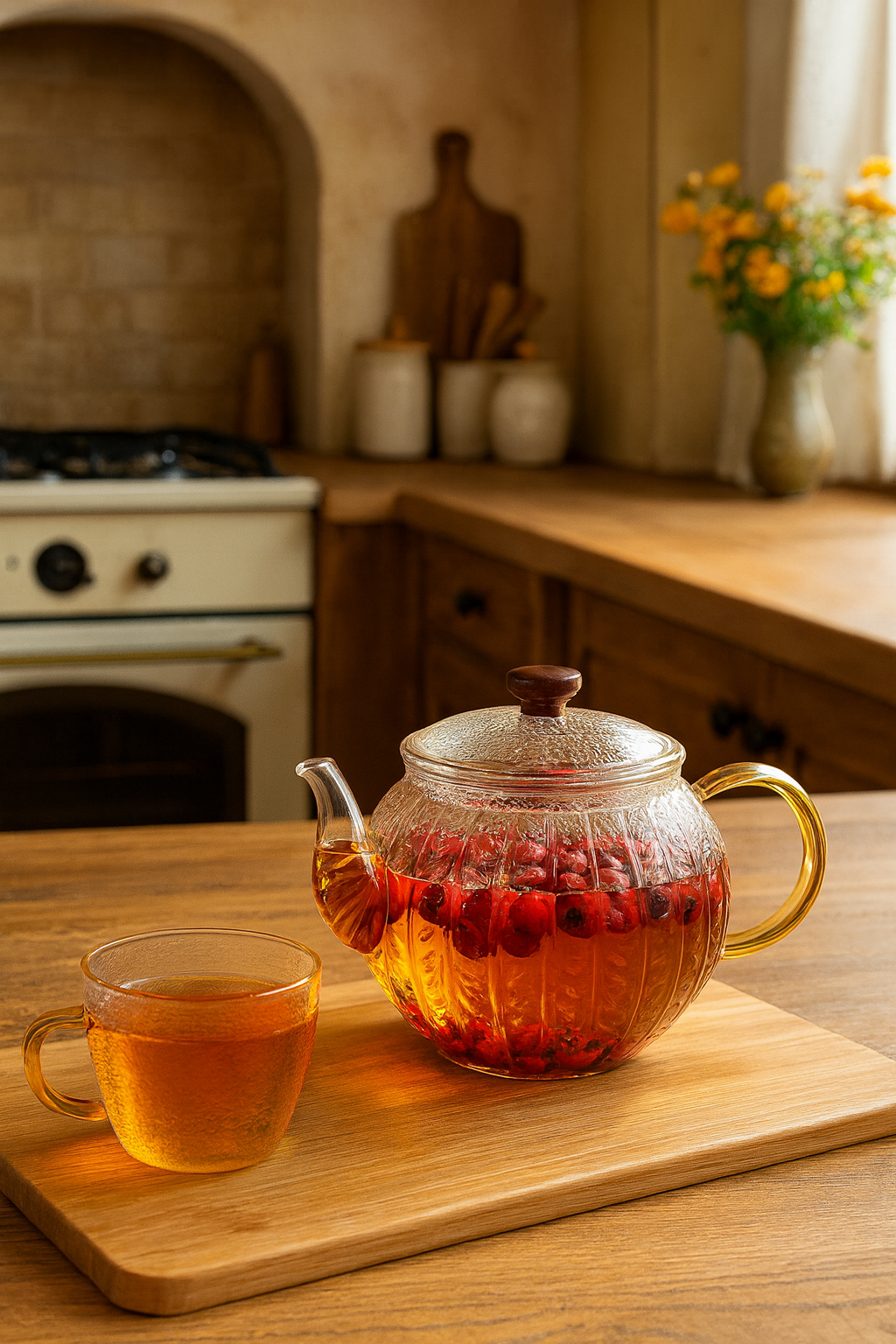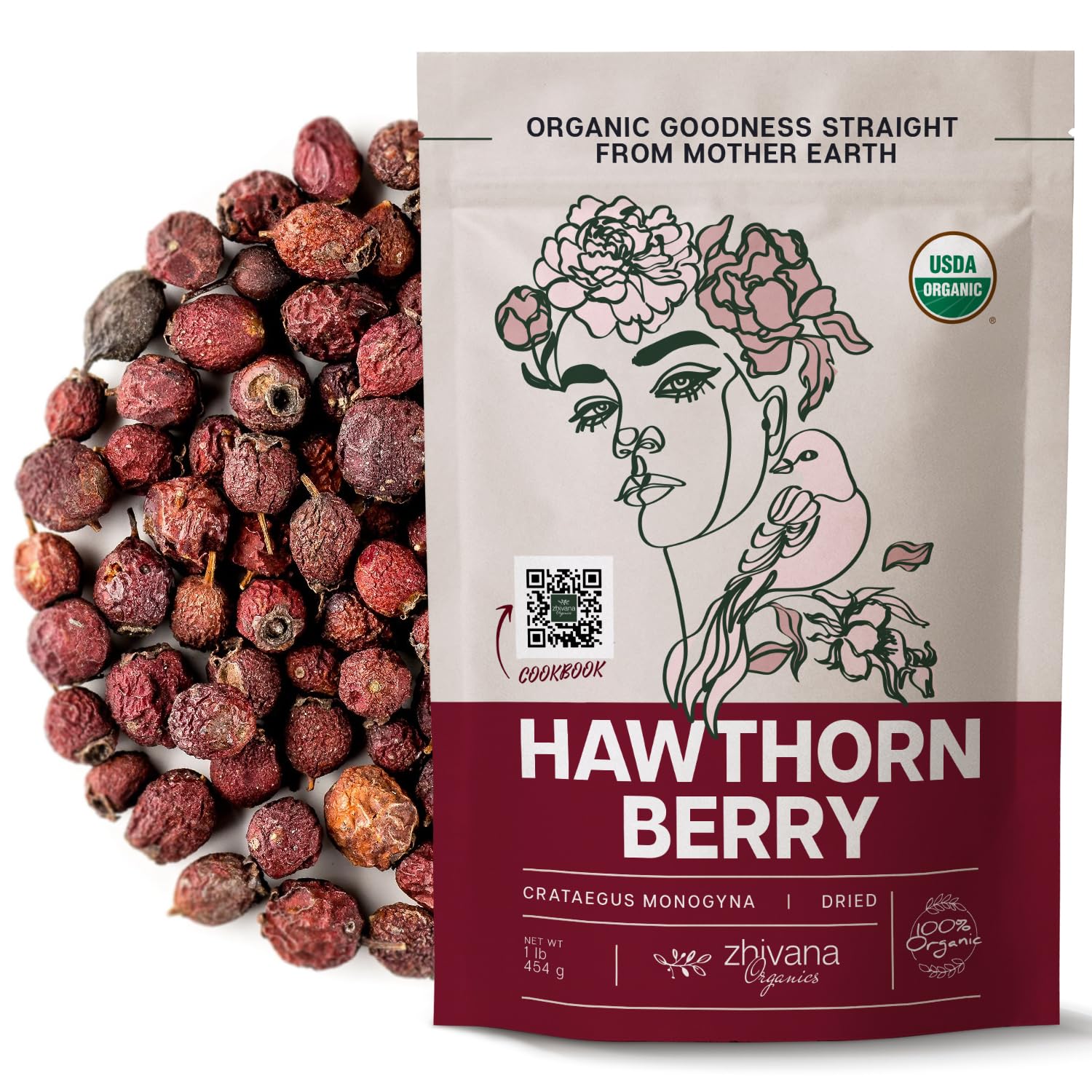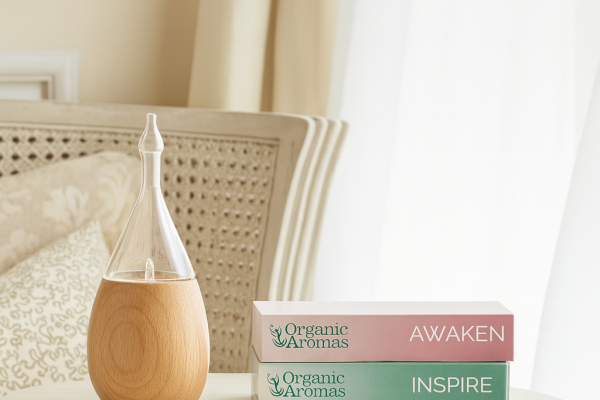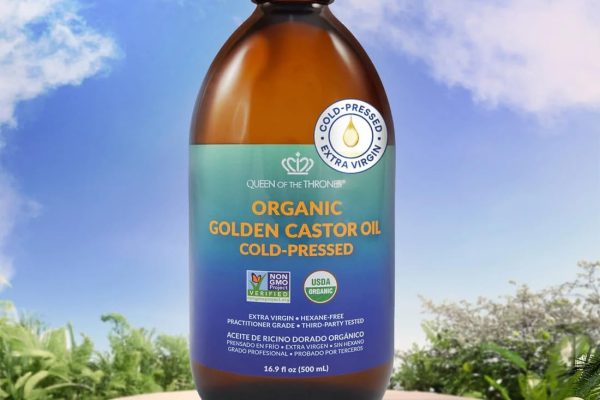 Hawthorn berry tea supports heart health by improving exercise capacity in heart failure patients, lowering blood pressure, and protecting blood vessels—but it requires proper preparation and can interact dangerously with heart medications.
Hawthorn berry tea supports heart health by improving exercise capacity in heart failure patients, lowering blood pressure, and protecting blood vessels—but it requires proper preparation and can interact dangerously with heart medications.
What Is Hawthorn Berry Tea?
Hawthorn comes from the Crataegus genus, a family of shrubs and trees with over 1,000 species. For centuries, people have used hawthorn leaves, flowers, and berries to treat heart problems.
The berries contain powerful compounds called oligomeric procyanidins (OPCs) and flavonoids. These molecules give hawthorn its therapeutic effects. Unlike simple herbal teas, hawthorn works more like medicine—with real benefits and real risks.
Proven Heart Health Benefits
1. Chronic Heart Failure Support

If you have mild to moderate heart failure, hawthorn berry tea may help you function better.
What the research shows:
- Patients improved their maximal workload by 7 watts compared to placebo
- Shortness of breath decreased significantly
- Fatigue levels dropped
- Exercise tolerance increased
These benefits apply specifically to people with New York Heart Association (NYHA) functional class II heart failure. The tea works alongside—not instead of—conventional treatment.
2. Blood Pressure Management
Organic Hawthorn Berry Tea [click to view…]
Hawthorn berry tea can lower your blood pressure, but you need patience.
The numbers:
- Systolic blood pressure drops by a measurable amount after 12-16 weeks
- Diastolic pressure shows smaller, often non-significant changes
- You need consistent daily use for at least 3 months
This isn’t a quick fix. Hawthorn works slowly, changing your cardiovascular system over time. Think of it as a restorative tonic, not a fast-acting drug.
3. Cholesterol and Blood Vessel Protection
The antioxidants in hawthorn berries protect your arteries in several ways:
- Stops LDL oxidation: Flavonoids prevent “bad” cholesterol from oxidizing, which triggers plaque buildup
- May lower cholesterol levels: Some studies show reduced total and LDL cholesterol
- Reduces atherosclerosis risk: By preventing cholesterol damage, hawthorn helps keep arteries clear
Key Active Compounds That Drive the Benefits

The berries contain the most OPCs—the compounds responsible for protecting heart muscle. But these molecules don’t dissolve easily in water. This is why proper preparation matters so much.
How Hawthorn Works in Your Body
Strengthens Heart Muscle Contractions
Hawthorn increases the force of each heartbeat without using the typical pathways that heart drugs use. Instead, it affects complex cell signaling involving:
- Protein tyrosine phosphorylation
- MAPK (mitogen-activated protein kinase) signaling
- Regulation without increasing calcium currents
This unique mechanism means hawthorn provides cardiac support through different channels than standard medications.
Opens Blood Vessels
The flavonoids in hawthorn tea make your blood vessels relax and widen:
- Activates factors that help blood vessels expand
- Inhibits phosphodiesterase (similar to some blood pressure drugs)
- Creates smooth muscle relaxation in arteries
Interestingly, this doesn’t work through the typical nitric oxide pathway. Hawthorn uses alternative mechanisms that scientists are still mapping out.
Protects Heart Cells from Damage
When heart muscle doesn’t get enough oxygen (like during a heart attack), cells start dying. Hawthorn’s flavonoid Vitexin protects against this damage by:
- Reducing cell death (apoptosis)
- Stopping calcium overload in cells
- Boosting your body’s internal antioxidant systems
- Improving how the left ventricle pumps blood
Critical Safety Information You Must Know
General Side Effects (Usually Mild)
Most people tolerate hawthorn berry tea well. When side effects occur, they’re typically minor:
- Dizziness or light-headedness
- Nausea or upset stomach
- Headache
- Sweating
- Muscle aches
The Seed Toxicity Issue
This is crucial: Hawthorn berry seeds contain amygdalin, a compound that releases deadly hydrogen cyanide when crushed.
The fleshy fruit is safe. The problem is the hard inner pit.
Safe vs. dangerous:
- ✅ Safe: Whole seeds that remain intact
- ✅ Safe: Lightly crushed berries with intact pits
- ❌ Dangerous: Ground, pulverized, or chewed seeds
When you prepare tea, you must crack the outer fruit flesh to extract the beneficial compounds while keeping the hard inner seeds completely whole. This requires careful, controlled preparation.
Dangerous Drug Interactions
WARNING: Hawthorn berry tea can interact dangerously with heart medications. This isn’t theoretical—people have died from these interactions.
High-risk medications:
- Digoxin: Hawthorn amplifies its effects, risking toxicity
- Beta blockers (Propranolol, Atenolol): Combined use can cause severe low blood pressure and slow heart rate
- Calcium channel blockers (Diltiazem, Nifedipine): Dangerous blood pressure drops
- Nitrates (Nitroglycerin): Extreme hypotension risk
- Anti-arrhythmics: May cause life-threatening heart rhythm problems
If you take any heart medication, you must consult your doctor before using hawthorn. Adding hawthorn to your routine is like increasing your medication dose—it creates an additive effect that can become dangerous.
Who Should Avoid Hawthorn Berry Tea
- Pregnant women (may stimulate the uterus)
- People allergic to Crataegus plants
- Anyone with severe heart conditions (without medical supervision)
- People taking cardiovascular medications (without doctor approval)
- Young children (safety not established)
How to Prepare Hawthorn Berry Tea Properly
Unlike regular tea, hawthorn berries require a decoction—prolonged simmering—to extract the beneficial OPCs.
The Correct Method
Ingredients:
- 1 teaspoon dried hawthorn berries per 8 oz water
- Optional: dried hawthorn leaves/flowers for additional flavonoids
Steps:
- Prepare the berries: Lightly crush the dried berries just enough to crack the outer flesh. The hard inner seeds must stay whole.
- Simmer (don’t just steep):
- Bring water to a full boil
- Add berries and reduce to gentle simmer
- Maintain simmer for 30-60 minutes minimum
- Optional overnight steep: After simmering, let the pot sit overnight before straining. This maximizes OPC extraction.
- Strain and drink: Remove all berry material before consuming.
Why This Method Matters
The dense berry structure won’t release OPCs with a simple 5-minute steep. You need sustained heat over 30+ minutes to pull these compounds into the water. Shorter preparation times waste the berries and give you weak tea with minimal benefits.
Time Frame: When to Expect Results
Hawthorn isn’t fast-acting. You’re rebuilding cardiovascular function, not masking symptoms.
Realistic timeline:
- Weeks 1-4: Minimal noticeable changes
- Weeks 6-12: Blood pressure begins dropping
- Months 3-6: Full cardiovascular benefits emerge
Plan on drinking hawthorn berry tea daily for at least 3 months before judging its effectiveness. This slow mechanism explains why it works well for chronic conditions but poorly for acute problems.
Who Benefits Most from Hawthorn Berry Tea?
Organic Hawthorn Berry Tea [click to view…]
Best candidates:
- People with mild heart failure (NYHA class II) on stable medication regimens
- Those with borderline high blood pressure (under medical monitoring)
- Anyone seeking cardiovascular protection alongside healthy lifestyle choices
- People interested in preventative heart health (without existing medications)
Poor candidates:
- Anyone seeking immediate blood pressure reduction
- People who need standalone treatment for hypertension
- Those unwilling to prepare tea properly
- Anyone taking heart medications without doctor supervision
The Bottom Line
Hawthorn berry tea offers real cardiovascular benefits backed by clinical research. It improves exercise capacity in heart failure, lowers blood pressure over time, and protects blood vessels from damage.
But it’s not a casual herbal tea. It’s a medicinal preparation that:
- Requires specific, careful preparation to work and stay safe
- Takes months to produce full effects
- Interacts dangerously with common heart medications
- Contains seeds that can release cyanide if improperly handled
If you have heart disease or take cardiovascular drugs, treating hawthorn like a harmless supplement could put you in danger. Work with a healthcare provider who understands both your medications and herbal medicine.
For people with mild cardiovascular issues or those seeking preventative support, properly prepared hawthorn berry tea provides a science-backed option. Just respect its power—both therapeutic and toxic—and use it wisely.
Next step: Talk to your doctor before starting hawthorn berry tea, especially if you take any medications. If cleared, source quality dried berries and learn the proper decoction technique before your first cup.
Dora Decora is a biophilic interior design specialist and passionate blogger. With a deep commitment to integrating nature into living spaces, Dora specializes in creating environments that foster human-nature connections through thoughtful design elements. Her approach emphasizes sustainable materials, natural lighting, and organic patterns that enhance wellbeing and reduce environmental impact.
This post (https://homechroma.com/hawthorn-berry-tea-benefits) was originally published by Dora Decora on Home Chroma. As an Amazon Associates partner, we are compensated for all qualifying purchases.






















